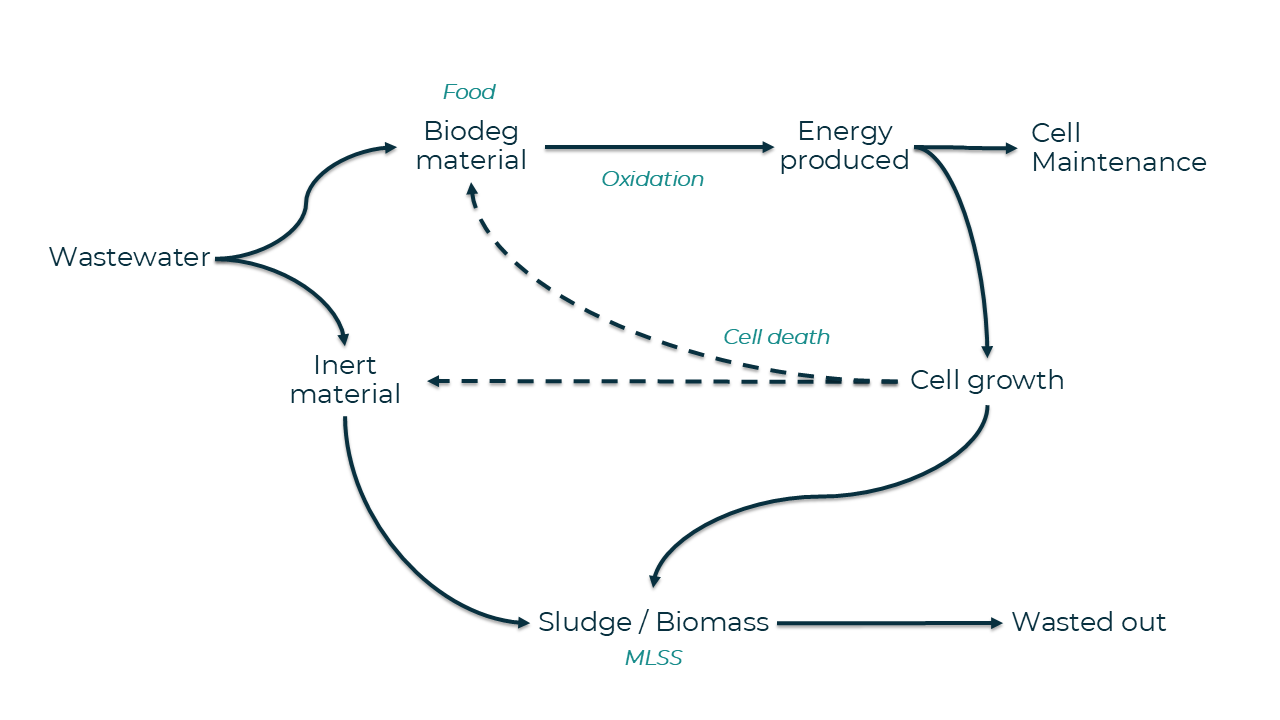Wasting: The Cycle You Can’t Ignore
Nov 05, 2025
Understanding the factors that affect sludge production fosters a deeper understanding and equips operators to respond proactively to daily system changes which ultimately translates to consistent regulatory compliance and optimized performance.
Maintaining the right amount of biomass in the activated sludge process is essential for system performance. Wasting is how we manage the amount of biomass and it is often described as something we do in response the microbial activity:
- ”Food” comes into the plant;
- It is consumed by microbes
- “Extra” microbes are produced from that consumption; and
- Wasting is practiced to get rid of the “extra” microbes produced.
This description is great for beginners but oversimplifies reality. Sludge production is shaped by microbial oxidation, energy use, cell death, and even inert compounds that the bugs do nothing with. As shown in the chart above, all these things influence one another and the overall quantity of biomass that develops in the reactor.
When we have good wasting practices we keep the biology in a “sweet spot” that balances all of these pathways in the figure. Wasting with the SRT strategy is hands-down the best way to achieve this, but whatever you do, do it consistently and on a mass-basis. I created a free tool to help calculate wasting needs using all three approaches. Download it here.
